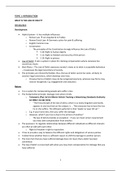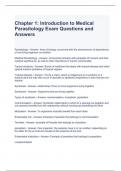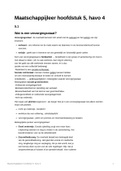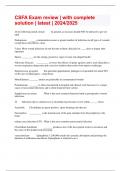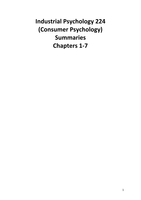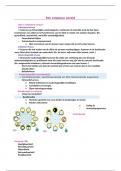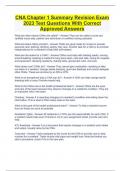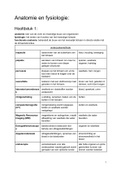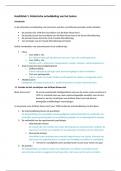TOPIC 1: INTRODUCTION
WHAT IS THE LAW OF DELICT?
Introduction
Development
• Hybrid system – it has multiple influences:
o Roman Law → Lex Acquilae & 12 Tables
o Roman Dutch Law → Germanic action for pain & suffering
o English Common Law
o Constitution
- The principles of the Constitution strongly influence the Law of Delict.
▪ S 10: Right to human dignity
▪ S 12: Right to freedom and security of the person
▪ S 14: Right to privacy
• Law of Delict: It sets a system in place for claiming compensation where someone has
caused you injury.
• Boni Mores – The Law of Delict expresses society’s views as to what is acceptable behaviour
– it expresses the legal convictions of society.
• The principles are inherently flexible; thus, the law of delict cannot be static, similarly to
society’s legal convictions, which develops over time.
o Previous forms of delicts may not be recognised anymore, whereas new forms may
now be recognised. E.g. engagement and seduction.
Nature
• It is a system for compensating people who suffer a loss.
• The fundamental principle: Damage rests where it falls.
o Telematric (Pty) Ltd t/a Matrix Vehicle Tracking v Advertising Standards Authority
SA 2006 1 SA 461 (SCA)
- “The first principle of the law of delict, which is so easily forgotten and hardly
appears in any local text on the subject, is ... That everyone has to bear the loss
he or she suffers. The Afrikaans aphorism is that ’skade rus waar dit val’.”
o E.g. If your horse dies, then you suffer the damage.
o However, what if your loss is due to the actions of another?
- The law of delict provides an exception – if you can meet certain requirement
you may claim compensation from another.
• The purpose is to regulate relationships between different individuals as different interests
are often at odd with each other.
o Right to freedom v right to reputation.
• It has to provide a way to balance the different rights and obligations of various parties.
• It determines whether there is sufficient reason to shift the damage to another person.
• The mere fact that you have suffered damage does not mean that a delict has been
committed.
• The law of delict is concerned with when you may claim compensation for damage that you
have suffered.
1
, • Once it has been determined that you have committed a delict, you have an obligation to
compensate the injured person.
o This differs from the Law of Contract which creates a voluntary obligation.
o There is no agreement which establishes the obligation.
o E.g. You did not ask to be a car accident.
• “The law of torts is concerned with those situations where the conduct of one party causes
or threatens harm to the interests of other parties… It is accordingly the aim of the law of
torts to define the obligations imposed on one member of society to his or her fellows, and
to adjust, once it is decided that some adjustment is to be made, those losses which must
inevitably result from the ever-increasing activities of those who live in a common society.
This adjustment is made by providing compensation for the harm suffered by those whose
interests have been invaded owning to the conduct of others.”
Why do we have the Law of Delict?
• Loss allocation and corrective justice
o Finding out who experience loss, how much loss is suffered & whether the loss is
actionable under the law of delict.
o Corrective justice requires the wrongdoer to fix the wrong through compensation or
reparation.
o Different individuals’ rights are in constant conflict and so the law of delict is a loss
allocation exercise where the court has to determine whether or not the burden
should shift from the plaintiff to the defendant.
• Regulatory framework
o It consists of a number of laws which regulate behaviour within the law of delict and
establishes which acts are/ are not permissible by an individual.
o It sets standards for human conduct, therefore serves a normative purpose and
prescribes a set of ethical rules and principles for social interaction.
o Boberg: “Law is a form of social engineering. This is particularly true of the law of
delict, which is close to the core problem of balancing individual freedom against
collective security.”
o E.g. If you slander someone – this is not acceptable behaviour and so you have to
pay compensation.
• Morality and fairness
o Manifests in the law of delict since delict requires judges to decide which conflicting
moral principles should be given practical effect when regulating behaviour in
society.
o It tries to determine what is the fair and equitable outcome in a certain situation. I.e.
Is it fair to bear the damage or should it be shifted?
o The core principle in South Africa upon which personal responsibility rests is that
there can be no liability without fault.
- However, there are instances where strict liability is recognised.
- Strict liability expresses a different morality; one which society determines
whether the nature of the conduct, or the risk associated with the conduct, is
such that a person should compensate anyone who suffers harm as a result.
I.e. If you engage in certain types of conduct, you bear the loss that is
occasioned with it.
2
,Fault-based liability vs strict liability
• The general public sentiment for moral wrongdoing for which the defendant must pay.
• Donoghue v Stevenson
o There was a decomposed snail at the bottom of her drink.
o She suffered emotional damage.
o Should product liability be recognised?
o Normally there is no liability without fault.
• If you can justify your actions, then you cannot be held liable.
• Cane: “Tort law [delict] is a complex mixture of principles of personal responsibility for
conduct (whether intentional, reckless or negligent) and personal responsibility for
outcomes (strict liability).”
Fault-based liability
• If a particular defendant harmed the plaintiff, he / she should be personally responsible for
righting that wrong. This implies fault which is strongly rooted in the conduct of the
wrongdoer, not the outcome.
• Justification:
1. Corrective justice
- If you are wrong, the law tries to correct that wrong.
2. Personal responsibility
- If you are at fault, you should be responsible for any consequences arising from
your actions.
Strict liability
• Definition: It prescribes that a third party must accept responsibility for the wrongdoing
because of the outcome, not the conduct. There must be a relationship between the
wrongdoer and the defendant.
o Faultless liability.
o Thus, you are held liable despite the fact that you are not at fault.
o This was not recognised in the Roman Law or the Roman Dutch Law.
• Types / Examples:
o Vicarious liability: The employer is held liable for the conduct of his / her employee,
this is due to their relationship.
- E.g. Employee commits a delict but then the employer is rather held
accountable.
o Liability for loss caused by animals – actio de pauperie and actio de pastu
o Product liability
- This is in terms of the Consumer Protection Act.
- The manufacturer / distributor is held liable for a fault with the product in order
to hold someone liable without establishing the actual wrongdoer.
- E.g. if you buy a TV but when you get home it won’t switch on, then you as the
consumer may take it back and demand a refund without proving fault.
3
, Vicarious liability
• Justification:
1. Control
- The employer has control over his employees, but arguably this is not so
relevant anymore as the employer does not always have that much control over
the conduct of his employees.
2. Risk
- This states that if you create a risk then you will be liable if that risk materialises.
- E.g. By building at someone’s house you are aware of the possibility of damage,
if damage ensues then you should be held liable.
- K v Minister of Safety and Security
▪ Raped by a police officer.
▪ “Vicarious liability is generally appropriate where there is a significant
connection between the creation or enhancement of a risk and the
wrong that accrues therefore, even if unrelated to the employer’s
desires.”
3. Benefit
- If you derive a profit or benefit from this conduct, then you should be liable for
the damage that arises due to this conduct.
- I.e. You pursue something for your own benefit, although employees perform
the actions on your behalf.
4. Deep pockets theory
- The employer is generally a more promising source of revenue than the
employee.
- Thus, it is more probable for the injured person to be successful at obtaining
compensation from the employer compared to the employee.
Product liability
• Justification: Don’t need to prove the fault of the producers.
1. Efficiency argument: better economic outcome
- This is because producers can ensure against any liability and are generally
better situated to absorb the losses compared to the consumers.
2. Reduces litigation
- Don’t need to take a manufacturer of a product to court each time the product
is defective.
3. Enhances product safety
- It tries to ensure that products are manufactured in a safe way.
4

